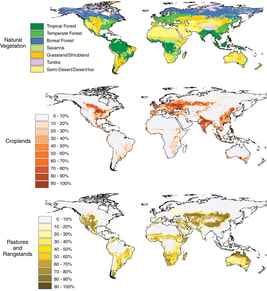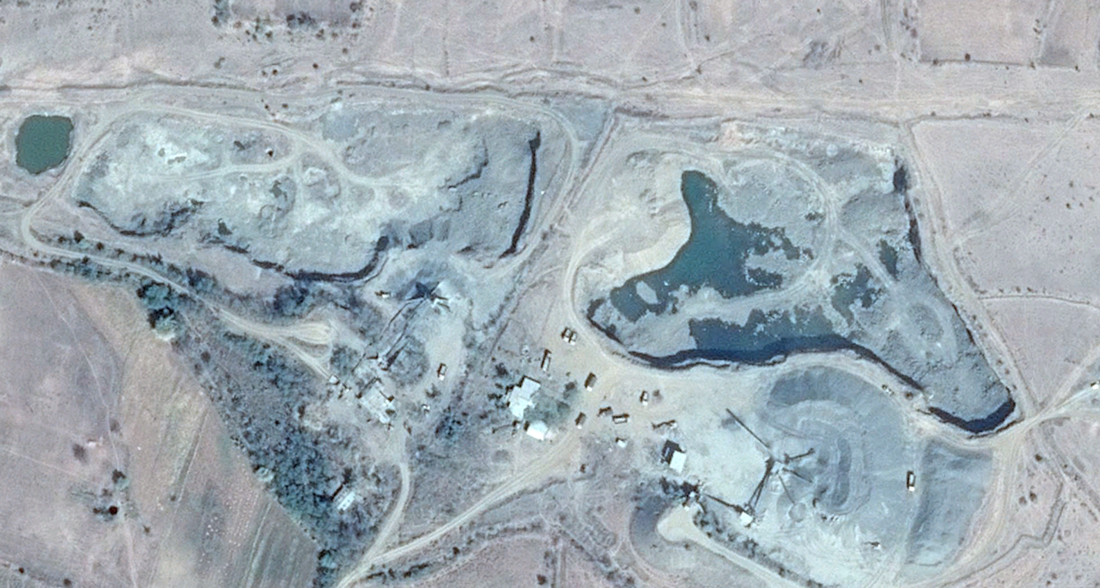Disease ecology and Land-Use
|
As a Spatial Ecologist at the Cary Institute, I was working on trying to understand the effects of land-cover on disease incidence. Does conversion of a forested area to an agricultural land increase the risk of contracting disease? Along with Sarah Bowden and Barbara Han, this project was aimed at understanding disease risk at the scale of the entire US.
|
Connectivity for Tigers in Central India
|
I digitized thermal power plants and coal mines using Google Earth to help understand what factors are impeding connectivity for tigers in Central India. This was a project carried out under Ruth DeFries and Trishna Dutta.
|
Range reductions and habitat suitability models
|
Endemic taxa have always been the first to face the deleterious effects of climate change and anthropogenic influences. Understanding and accurately estimating their ranges is of utmost importance for conservation. Species distribution modeling has become a widely used tool due to the advances made in accurately predicting habitat suitability. Using a range of techniques and data from multiple species of birds in the Western Ghats, I worked towards estimating what habitats are most suitable to a bird species in the Western Ghats. How do you define a 'suitable habitat' for a particular species? I worked on this in collaboration with Trisha Gopalakrishna and Sahas Barve for my Master's thesis. In addition, I was advised by Mary E Blair, Brian T Smith, Joel Cracraft and Don Melnick .This study was being supported by the Columbia University Master's Thesis Grant, the Cooper Ornithological Society and IDEA WILD.
|
Birding in the Himalayas!
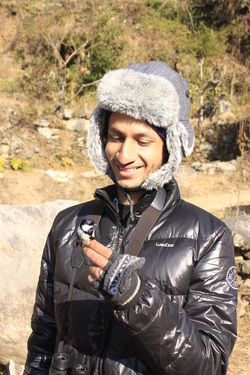
I worked as a field research assistant under Sahas Barve (PhD Candidate, Cornell University) in Kedarnath Wildlife Sanctuary this winter, for a period of 3 months (January - April 2014). Apart from birding in this beautiful landscape and mist-netting different species of birds day after day, I learnt a lot about how a bird should be handled, ringed and extracting blood from the individual. This was a part of Sahas's PhD work, where he is trying to understand if interspecific competition or physiology is playing a big factor in altitudinal distributions of west Himalayan tits (Paridae). My job involved mist netting, getting to trek everyday to beautiful and pristine habitats at 3000 metres above sea level and counting RBC's in a make-shift lab at our base camp using a haemocytometer :). In spite of the harsh winter year after year, it is just remarkable to see the diversity of wildlife found at this altitude. I hope to return soon to the Greater Himalayas.
Herping in an urban landscape..(A lab 'frog')

What started off as a mail to Dr. Kartik Shanker at the Centre for Ecological Sciences, Indian Institute of Science inquiring if I could pursue an idea for my undergraduate thesis ended up becoming a full fledged project for over a year (January 2013 - January 2014). As a biotechnologist, I was asked to come up with an idea which ensured that it had a 'genetic' component to it. I said, why not? Combine my passion for wildlife and add a 'pinch' of genetics to it?
This was my first foray into the field of molecular phylogenetics and evolution, which basically means that I try to understand evolutionary relationships between different species using molecular tools. With the help of Vijayakumar SP, who has been a patient and understanding guide, I developed a project in which I tried to detect hidden 'cryptic' diversity within a genus of frogs from the Western Ghats (Indirana). There are many species which exhibit no morphological differences, but they are genetically very very different. Suppose, we would look at two frogs, which might look exactly the same to the two of us, but they are actually not! How do we resolve this mess? I tried to identify such lineages and understand their geographic distributions & evolutionary relationships. This work is currently in preparation and the link to the publication will be added here.
This was my first foray into the field of molecular phylogenetics and evolution, which basically means that I try to understand evolutionary relationships between different species using molecular tools. With the help of Vijayakumar SP, who has been a patient and understanding guide, I developed a project in which I tried to detect hidden 'cryptic' diversity within a genus of frogs from the Western Ghats (Indirana). There are many species which exhibit no morphological differences, but they are genetically very very different. Suppose, we would look at two frogs, which might look exactly the same to the two of us, but they are actually not! How do we resolve this mess? I tried to identify such lineages and understand their geographic distributions & evolutionary relationships. This work is currently in preparation and the link to the publication will be added here.
What is Animal behaviour?
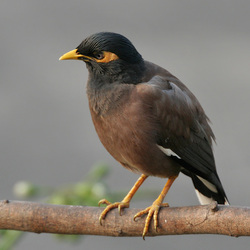
During the summer of 2012, I was chosen to attend the Summer Research Fellowship Programme offered by Jawaharlal Nehru Centre for Advanced Scientific Research, Bangalore. This was the first time I was exposed to a research environment and interacted with students & professors from various research disciplines. I worked under Dr. TNC Vidya on trying to understand why mynas aggregate to form a pre-roost before they enter their roost. What was the necessity for this aggregation? I also tried to study their foraging behaviour by following them throughout the day and video-recording the birds in their foraging grounds. I then analyzed the videos frame by frame to understand how much time was devoted to actual feeding, vigilance (watching out for predators) and how many fed in groups? Was feeding better in groups? I completely enjoyed this research experience, which gave me a taste of what the field of animal behaviour is all about.
Where it all started...Camera trapping tigers
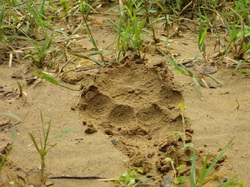
One rainy evening in Bangalore, I decided to write to Dr. Bivash Pandav (Wildlife Institute of India, Dehradun), asking him if there is any opportunity for a person from a background such as mine to spend two months doing field work. What started off as a small learning experience, unfolded into a tremendous adventure as a team of wildlife biologists from WII and I were involved in camera trapping tigers in Corbett Tiger Reserve during the monsoon. We were able to establish active usage of a particular road along the border of the reserve by tigers and ensured that the government of India did not build a highway there. Apart from numerous bird , snake and mammal sightings, this experience gave me an insight into the critical issue of Human-wildlife conflict.
